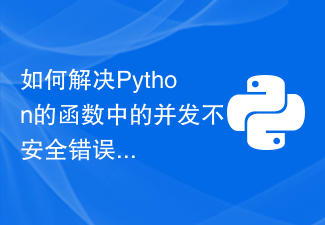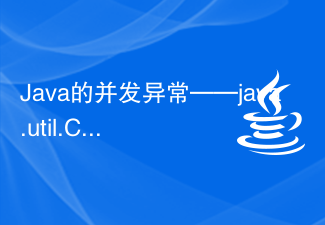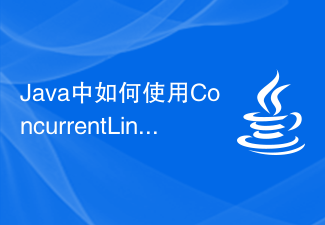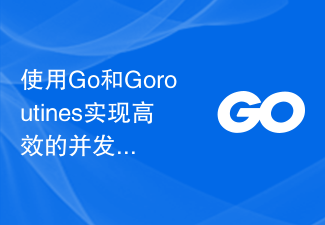
Golang is an open source programming language developed by Google and is designed to provide efficient performance and concise syntax. As a modern programming language, Golang's architecture has many core components that provide developers with powerful tools and features that enable them to build various types of applications quickly and efficiently. This article will introduce the core components of Golang architecture and give specific code examples.
- Packages
In Golang, code organization is achieved through packages. A package is a set of related code files that can be compiled and distributed together. A package can contain multiple files, and each file can contain one or more functions. In order to facilitate code reuse and maintenance, developers usually organize related code into different packages, and then introduce the required packages through import statements.
package main
import "fmt"
func main() {
fmt.Println("Hello, World!")
}- Functions
Functions are the basic building blocks of Golang programs. Functions can achieve code modularization and reuse. In Golang, the definition of a function begins with the func keyword. A function can receive parameters and return one or more values.
func add(a, b int) int {
return a + b
}- Structures (Structs)
Structure is a custom data type that can contain different types of fields. Structs are widely used in Golang to represent complex data structures.
type Person struct {
Name string
Age int
}
func main() {
person := Person{Name: "Alice", Age: 30}
fmt.Println(person)
}- Interfaces
Interface is an abstract data type in Golang. The interface defines the signature of a set of methods. A type is considered to implement an interface as long as it implements all methods defined by the interface.
type Shape interface {
Area() float64
}
type Circle struct {
Radius float64
}
func (c Circle) Area() float64 {
return math.Pi * c.Radius * c.Radius
}- Concurrency
Golang supports concurrent programming and implements concurrent operations through goroutine and channel. Goroutine is a lightweight thread that can help programs achieve concurrent execution; channel is a mechanism for transferring data between goroutines.
func main() {
ch := make(chan int)
go func() {
ch <- 1
}()
val := <-ch
fmt.Println(val)
}The above are the core components of the Golang architecture, each part has its unique functions and roles. By using these components flexibly, developers can more efficiently build applications that meet their needs. I hope the above introduction and code examples can help readers better understand and apply the core architecture of Golang.
The above is the detailed content of What are the core components of Golang architecture?. For more information, please follow other related articles on the PHP Chinese website!
 Go 语言中的 goroutine 是什么?Jun 11, 2023 am 11:50 AM
Go 语言中的 goroutine 是什么?Jun 11, 2023 am 11:50 AMGo语言是一种开源编程语言,由Google开发并于2009年面世。这种语言在近年来越发受到关注,并被广泛用于开发网络服务、云计算等领域。Go语言最具特色的特点之一是它内置了goroutine(协程),这是一种轻量级的线程,可以在代码中方便地实现并发和并行计算。那么goroutine到底是什么呢?简单来说,goroutine就是Go语言中的
 Java 中的锁机制Jun 08, 2023 am 08:03 AM
Java 中的锁机制Jun 08, 2023 am 08:03 AMJava作为一种高级编程语言,在并发编程中有着广泛的应用。在多线程环境下,为了保证数据的正确性和一致性,Java采用了锁机制。本文将从锁的概念、类型、实现方式和使用场景等方面对Java中的锁机制进行探讨。一、锁的概念锁是一种同步机制,用于控制多个线程之间对共享资源的访问。在多线程环境下,线程的执行是并发的,多个线程可能会同时修改同一数据,这就会导致数
 如何解决Python的函数中的并发不安全错误?Jun 24, 2023 pm 12:37 PM
如何解决Python的函数中的并发不安全错误?Jun 24, 2023 pm 12:37 PMPython是一门流行的高级编程语言,它具有简单易懂的语法、丰富的标准库和开源社区的支持,而且还支持多种编程范式,例如面向对象编程、函数式编程等。尤其是Python在数据处理、机器学习、科学计算等领域有着广泛的应用。然而,在多线程或多进程编程中,Python也存在一些问题。其中之一就是并发不安全。本文将从以下几个方面介绍如何解决Python的函数中的并发不安
 PHP8.0如何使用Fibers实现并发May 14, 2023 am 09:01 AM
PHP8.0如何使用Fibers实现并发May 14, 2023 am 09:01 AM随着现代互联网技术的不断发展,网站访问量越来越大,对于服务器的并发处理能力也提出了更高的要求。如何提高服务器的并发处理能力是每个开发者需要面对的问题。在这个背景下,PHP8.0引入了Fibers这一全新的特性,让PHP开发者掌握一种全新的并发处理方式。Fibers是什么?首先,我们需要了解什么是Fibers。Fibers是一种轻量级的线程,可以高效地支持PH
 Java的并发异常——java.util.ConcurrentModificationException怎么办?Jun 25, 2023 am 11:46 AM
Java的并发异常——java.util.ConcurrentModificationException怎么办?Jun 25, 2023 am 11:46 AMJava作为一种高级语言,在编程语言中使用广泛。在Java的应用程序和框架的开发中,我们经常会碰到并发的问题。并发问题是指当多个线程同时对同一个对象进行操作时,会产生一些意想不到的结果,这些问题称为并发问题。其中的一个常见的异常就是java.util.ConcurrentModificationException异常,那么我们在开发过程中如何有效地解决这个异
 Java中如何使用ConcurrentLinkedQueue函数进行并发队列操作Jun 26, 2023 pm 05:37 PM
Java中如何使用ConcurrentLinkedQueue函数进行并发队列操作Jun 26, 2023 pm 05:37 PMJava中的ConcurrentLinkedQueue函数为开发者提供了一种线程安全的、高效的队列实现方式,它支持并发读写操作,并且执行效率较高。在本文中,我们将介绍Java中如何使用ConcurrentLinkedQueue函数进行并发队列操作,帮助开发者更好地利用其优势。ConcurrentLinkedQueue是Java中的一个线程安全、非阻塞的队列实
 使用Go和Goroutines实现高效的并发图计算Jul 21, 2023 pm 03:58 PM
使用Go和Goroutines实现高效的并发图计算Jul 21, 2023 pm 03:58 PM使用Go和Goroutines实现高效的并发图计算引言:随着大数据时代的到来,图计算问题也成为了一个热门的研究领域。在图计算中,图的顶点和边之间的关系非常复杂,因此如果采用传统的串行方法进行计算,往往会遇到性能瓶颈。为了提高计算效率,我们可以利用并发编程的方法使用多个线程同时进行计算。今天我将向大家介绍使用Go和Goroutines实现高效的并发图计算的方法
 Swoole实践:如何利用协程优化多进程并发访问Jun 13, 2023 pm 09:41 PM
Swoole实践:如何利用协程优化多进程并发访问Jun 13, 2023 pm 09:41 PM随着Web应用程序越来越复杂,访问并发处理和性能优化变得越来越重要。在许多情况下,使用多进程或线程处理并发请求是解决方案。然而,在这种情况下,需要考虑上下文切换和内存占用等问题。在本文中,我们将介绍如何使用Swoole和协程来优化多进程并发访问。Swoole是一个基于PHP的协程异步网络通信引擎,它允许我们非常方便地实现高性能的网络通信。Swoole协程简


Hot AI Tools

Undresser.AI Undress
AI-powered app for creating realistic nude photos

AI Clothes Remover
Online AI tool for removing clothes from photos.

Undress AI Tool
Undress images for free

Clothoff.io
AI clothes remover

AI Hentai Generator
Generate AI Hentai for free.

Hot Article

Hot Tools

SublimeText3 Chinese version
Chinese version, very easy to use

mPDF
mPDF is a PHP library that can generate PDF files from UTF-8 encoded HTML. The original author, Ian Back, wrote mPDF to output PDF files "on the fly" from his website and handle different languages. It is slower than original scripts like HTML2FPDF and produces larger files when using Unicode fonts, but supports CSS styles etc. and has a lot of enhancements. Supports almost all languages, including RTL (Arabic and Hebrew) and CJK (Chinese, Japanese and Korean). Supports nested block-level elements (such as P, DIV),

SublimeText3 Linux new version
SublimeText3 Linux latest version

MantisBT
Mantis is an easy-to-deploy web-based defect tracking tool designed to aid in product defect tracking. It requires PHP, MySQL and a web server. Check out our demo and hosting services.

SAP NetWeaver Server Adapter for Eclipse
Integrate Eclipse with SAP NetWeaver application server.






